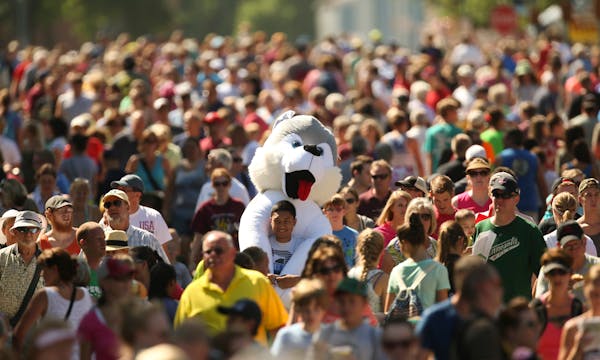When Harlan Nickerson drove delivery trucks, he often cruised across Minneapolis' Hennepin Avenue Bridge into the neighborhood surrounding the U, where the streets are labeled "southeast." After driving the route for years, the 64-year-old realized this nomenclature didn't quite make sense.
"The southeast streets aren't in the southeast section of the city," Nickerson said.
Indeed, the area considered southeast Minneapolis actually sits north of I-94, which many consider the city's unofficial north-south divider. It's the wedge of land home to Prospect Park, Dinkytown and Marcy-Holmes. It also includes the Southeast Library and the Southeast Como neighborhoods — and from a bird's-eye view, both are dots in the city's top right quadrant.
Why is southeast Minneapolis located northeast of downtown? Nickerson's query was just one of many about the state's geographical oddities submitted to the Star Tribune's Curious Minnesota project, a community-driven reporting series fueled by questions from inquisitive readers.
In the Twin Cities, many street names that may seem incongruous at first glance get their directions from the Mississippi River. Just as the famed banks of the Seine in Paris are conventionally known as the right and left, Minnesota's longest river has an East Bank and a West Bank.
The East Bank of the Mississippi was settled first, with the town of St. Anthony receiving its charter in 1855, former Minnesota Historical Society curator Lucile Kane wrote in a 1956 article published in Minnesota History magazine.
On the West Bank, an entirely separate city sprang up. It was called Minneapolis, and it grew so rapidly that by 1870, its population was nearly triple that of St. Anthony. Two years later, the cities merged, and St. Anthony was absorbed by its more populous neighbor across the river.
"Still," Kane wrote, "within the corporate body of Minneapolis, the vanquished city retained a stubborn identity."
For years, the area formerly known as St. Anthony held onto its street names. In old business directories, those addresses included an "ED" — standing for "East Division" — after the street name, said Wendy Menken, a longtime resident of the Southeast Como neighborhood. What is now East Hennepin Avenue served as the dividing line, separating the northern and southern parts of this "East Division." Hence, southeast.
In the early 1900s, however, the city changed the names of roads east of the river to purge duplicate postal addresses. In the rather messy process, a string of streets were stuck with the southeast label as part of the city's "attempt to make some sense of everything," said Connie Sullivan, an amateur historian who moved to southeast Minneapolis years ago to be near the U, where she was a professor. The official "East Division" addendum was lost, though the area across the river is still known informally by some as the East Side.
It can be frustrating to southeast locals when people refer to the Lunds & Byerlys on University Avenue SE as the "northeast Lunds," Sullivan said. Most of today's confusion is merely a result of time's passage, as the number of people who remember the story behind southeast Minneapolis' moniker dwindled.
Still, loyal residents defend their namesake and seize every opportunity to educate others about its origins.
"Topography and history trump the compass," Sullivan said.
---
If you'd like to submit a Curious Minnesota question, fill out the form below:
Read more Curious Minnesota stories:
Why was Minneapolis' mansion street destroyed, but St. Paul's survived?
Is Duluth the most inland seaport in North America?
Why won't anyone in Minnesota take the last piece of food?
Is Minnesota's tiny Lake Itasca the true source of the Mississippi River?
How much are electric vehicles affected by Minnesota's extreme cold?
Why is Uptown south of downtown in Minneapolis?
Why can't Minnesotans figure out how to zipper merge?
What percentage of Minnesotans spend their entire lives here?
How did Minnesota's indigenous people survive the extreme winters?



